 W
WChild abuse or child maltreatment is physical, sexual, and/or psychological maltreatment or neglect of a child or children, especially by a parent or a caregiver. Child abuse may include any act or failure to act by a parent or a caregiver that results in actual or potential harm to a child and can occur in a child's home, or in the organizations, schools, or communities the child interacts with.
 W
WChild Friendly Spaces (CFS) are safe spaces set up in emergency settings to help support and protect children. Their objective is to restore a sense of normality and continuity to children whose lives have been disrupted by war, natural disaster, or other emergencies. They provide children with opportunities to develop, play, learn, and strengthen resiliency either after a crisis or during a protracted emergency in a safe, child friendly, and stimulating environment. NGOs or governments design and operate CFS in a participatory manner, often relying on community support. They are a short- to medium-term program response and often operate in tents or temporary structures. CFS are one of the most widely used child protection and psychosocial support interventions in emergencies. One reason for their popularity is that they offer potential for adaptability of activities to diverse contexts, rapid deployment, and low relative costs. Different agencies refer to CFS by different names including Child Centered Spaces (CCS), Safe Spaces, Safe Play Areas, and Child Friendly Spaces/Environments (CFS/E).
 W
WChild Helpline International is a global network of 173 child helplines in 142 countries.
 W
WThe Columna Lactaria was a landmark in ancient Rome in the Forum Holitorium, or produce market. The Roman grammarian Festus says it was so called "because they would bring babies there to be fed with milk." It seems to have been a public charity where poor parents could obtain milk for their infants, or a central site for locating and hiring wet nurses. It has also been interpreted as a sanctioned site of child abandonment, where parents unable or unwilling to care for newborns could leave the child in the hope that it might be pitied and fostered.
 W
WDear Zachary: A Letter to a Son About His Father is a 2008 American documentary film written, produced, edited, and directed by Kurt Kuenne. The film is about Kuenne's close friend Andrew Bagby, who was murdered after Bagby ended a relationship with a woman named Shirley Jane Turner. Shortly after she was arrested as a suspect, Turner announced that she was pregnant with Bagby's child, a boy she named Zachary.
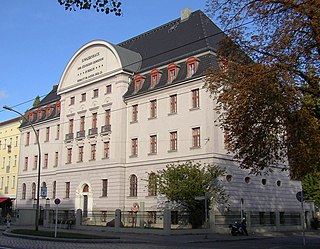 W
WDeinstitutionalisation is the process of reforming child care systems and closing down orphanages and children's institutions, finding new placements for children currently resident and setting up replacement services to support vulnerable families in non-institutional ways. It became common place in many developed countries in the post war period. It has been taking place in Eastern Europe since the fall of communism and is now encouraged by the EU for new entrants. It is also starting to take hold in Africa and Asia although often at individual institutions rather than statewide. New systems generally cost less than those they replace as many more children are kept within their own family.
 W
WDepartment of Children and Family Services (DCFS) is an agency of the government of Los Angeles County. DCFS's operations involve investigating child welfare and abuse allegations, foster care, and adoption.
 W
WElsagate is termed as neologism referring to the controversy surrounding videos on YouTube and YouTube Kids that are categorized as "child-friendly", but which contain themes that are inappropriate for children. Most videos under this classification are notable for presenting content—those include graphic violence, sexual situations, fetishes, obscene language, drugs, alcohol, injections, toilet humor and dangerous or upsetting situations and activities.
 W
WThe Hôpital des Enfants-Trouvés was an institution of Paris established to take care of abandoned children.
 W
WFamily-centered practices (FCPs) use a variety of different tools for child development, where the development, provision, and assessment of healthcare is equally constructive to both children and their families. FCP is valuable to clients of all children and can be applied in many different healthcare settings.
 W
WA feral child is a human child who has lived isolated from human contact from a very young age, and so has had little or no experience of human care, behavior, or human language. There are several confirmed cases and other speculative ones. Feral children may have experienced severe abuse or trauma before being abandoned or running away. They are sometimes the subjects of folklore and legends, typically portrayed as having been raised by animals.
 W
WFriends of Schneider is the official charity of Schneider Children's Medical Center of Israel.
 W
WA full-body scanner is a device that detects objects on or inside a person's body for security screening purposes, without physically removing clothes or making physical contact. Depending on the technology used, the operator may see an alternate-wavelength image of the person's naked body, merely a cartoon-like representation of the person with an indicator showing where any suspicious items were detected or full X-ray image of the person. For privacy and security reasons, the display is generally not visible to other passengers, and in some cases is located in a separate room where the operator cannot see the face of the person being screened. Unlike metal detectors, full-body scanners can detect non-metal objects, which became an increasing concern after various airliner bombing attempts in the 2000s. Transmission X-ray body scanners can also detect swallowed items or hidden in body cavities of a person.
 W
WGender responsive approach for girls in the juvenile justice system represents an emerging trend in communities and courts throughout the United States, Australia and Latin America, as an increasing number of girls are entering the juvenile justice system. A gender responsive approach within the juvenile justice system emphasizes considering the unique circumstances and needs of females when designing juvenile justice system structures, policies, and procedures.
 W
WLeslie Gilbert-Lurie is an American author, community leader, philanthropist, lawyer, and former television executive. Her memoir, Bending Toward the Sun, was published in 2009 by Harper Collins. She frequently moderates panel discussions and publicly speaks on topics related to human rights and policy reform.
 W
WCora Bussey Hillis was a child welfare advocate. Her work advanced children's health care, education, and the juvenile justice system in Iowa. She was admitted into the Iowa Women's Hall of Fame in 1976.
 W
WJohn Joseph Jessing a German-American immigrant, who became a Catholic priest in the United States, and was a pioneer in Catholic orphanage work and Catholic education. He was also the founder of the Pontifical College Josephinum in Columbus, Ohio, in 1888.
 W
WCommunal child rearing was the method of education that prevailed in the collective communities in Israel, until about the end of the 1980s.
 W
W"Lost boys" is a term used for young men who have been excommunicated or pressured to leave polygamous Mormon fundamentalist groups such as the Fundamentalist Church of Jesus Christ of Latter Day Saints (FLDS). They are alleged to be pressured to leave by adult men to reduce competition for wives within such sects, usually when they are between the ages of 13 and 21.
 W
WThe National Socialist Schoolchildren's League, known under the acronyms NSS and more rarely NSSB, was a Nazi Party organisation for primary school pupils providing a student council and child protection system in Germany from 1929 to 1933.
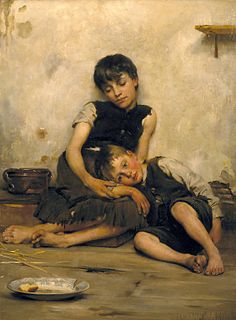 W
WAn orphan is a child whose parents have died, are unknown, or have permanently abandoned them.
 W
WHistorically, an orphanage is a residential institution, or group home, devoted to the care of orphans and other children who were separated from their biological families. Examples of what would cause a child to be placed in orphanages are when the parents were deceased, the biological family was abusive to the child, there was substance abuse or mental illness in the biological home that was detrimental to the child, or the parents had to leave to work elsewhere and were unable or unwilling to take the child. The role of legal responsibility for the support of children whose parent(s) have died or are otherwise unable to provide care differs internationally.
 W
WAs of 2011 from the numbers presented from Russia at the UN states that, Russia has over 650,000 children who are registered orphans, 70% of which arrived in the orphanages in the 1990s. Of these, 370,000 are in state-run institutions while the others are either in foster care or have been adopted. Reports have ranged saying that between 66-95% of all of these children are considered social orphans, meaning that one or more of their birth parents are still alive.
 W
WAt certain periods the Soviet state had to deal with large numbers of orphans in the Soviet Union - due to a number of turmoils in the history of the country from its very beginnings. Major contributors to the population of orphans and otherwise homeless children included World War I (1914-1918), the October Revolution of November 1917 followed by the Russian Civil War (1917-1922), famines of 1921–1922 and of 1932–1933, political repression, forced migrations, and the Soviet-German War theatre (1941-1945) of World War II.
 W
WChild protection is the safeguarding of children from violence, exploitation, abuse, and neglect. Article 19 of the UN Convention on the Rights of the Child provides for the protection of children in and out of the home. One of the ways to ensure this is by giving them quality education, the fourth of the United Nations Sustainable Development Goals, in addition to other child protection systems.
 W
WRankenheim is a mansion on Zemminsee in Groß Köris, Brandenburg, approx. 50 kilometres south of Berlin. In Nazi Germany it was used as a camp for educating teachers. After 1945 it became a temporary hospital and eventually a place for "maladjusted children" during the GDR regime - it is now a youth village. The surrounding district of Groß Köris is called Rankenheim.
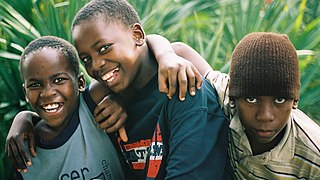 W
WNearly half of all refugees are children, and almost one in three children living outside their country of birth is a refugee. These numbers encompass children whose refugee status has been formally confirmed, as well as children in refugee-like situations.
 W
WRugby boys are a collective term for gangs of street children found in the Philippines. They are one of the most well-known poverty-afflicted people found in the slums of the Philippines. They are known for using and being addicted to a contact cement known as "Rugby" brand manufactured by Bostik and other aromatic solvents to alleviate their hunger, and resulting in crime to fund their addiction.
 W
WSatellite babies refer to immigrants’ children who are temporarily sent back to their home country by their parents to be reared by extended family. Typically, the satellite babies are born in the host country and sent back as infants, returning to their parents in time to start schooling or when their parents have established financial stability. Research and media articles on satellite babies have predominantly focused on the topic from a Chinese-American context. Satellite babies have become more prevalent in recent decades due to globalisation, prompting researchers and social workers to raise concerns about the psychological impacts of repeated attachment disruptions and acculturation associated with satellite babies.
 W
WThe Texas Bureau of Child and Animal Protection is (about) the earliest documented form of child protection. The Bureau was created by the 33rd Texas Legislature by adopting HB-540 on March 29, 1913, go become effective on July 1, 1913. This appears to be one of the earliest known forms of Child and Animal Protection in the state.
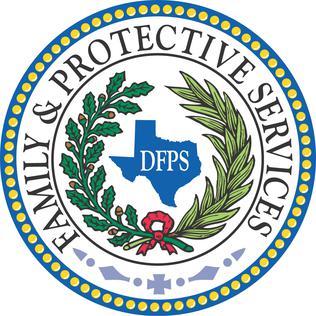 W
WThe Texas Department of Family and Protective Services (DFPS) is responsible for investigating charges of abuse, neglect or exploitation of children, elderly adults and adults with disabilities. Prior to its creation in 2004, the agency had been called the Texas Department of Protective and Regulatory Services (DPRS).
 W
WZachary Andrew Turner was a boy from St. John's, Newfoundland, Canada who was murdered by his mother, Shirley Jane Turner, in a murder–suicide. At the time, Shirley had been released on bail and awarded custody of the infant, even though she was in the process of being extradited to the United States to stand trial for the murder of Zachary's father, Andrew David Bagby. The case led to a critical overview of Newfoundland's legal and child welfare systems as well as Canada's bail laws.
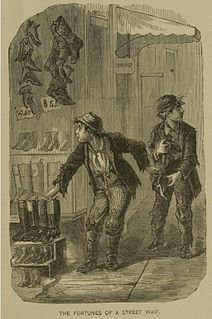 W
WA waif is a living creature removed, by hardship, loss or other helpless circumstance, from its original surroundings. The most common usage of the word is to designate a homeless, forsaken or orphaned child, or someone whose appearance is evocative of the same.